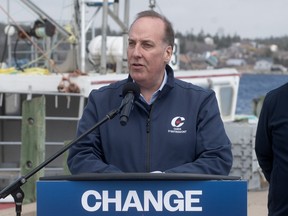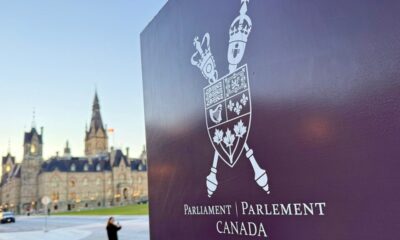Top Stories
Carney Government Announces Urgent Cuts: 16,000 Public Jobs Slashed

UPDATE: The Carney government has just announced a drastic reduction in the federal workforce, slashing 16,000 positions—approximately 4.5 percent of the public service—over the next three fiscal years. This move aims to return the bureaucracy to a “more sustainable level,” according to Finance Minister François-Philippe Champagne.
The cuts, which begin in April 2026 and extend through 2029, come as the government grapples with a budget deficit estimated at $78 billion. The planned reductions are part of a broader strategy to generate $60 billion in savings and revenues over five years.
The public service, which peaked at nearly 370,000 employees in 2024, has been growing faster than the Canadian population. Currently, there are 357,965 public servants, with a significant 43 percent located in the National Capital Region, making the federal government the largest employer in the Ottawa-Gatineau area.
Champagne emphasized the government’s commitment to minimize hardship for employees, stating, “We need to bring back the civil service to a more sustainable level. But we’re going to be very compassionate.” To ease the transition, the government plans to introduce a voluntary “early retirement incentive” program starting on January 15, 2026, with an expected net fiscal impact of $1.5 billion over five years.
This announcement has ignited reactions from public sector unions, with the Public Service Alliance of Canada (PSAC) preparing for significant job losses. Experts have described the cuts as “relatively modest,” while stressing the need for clarity on how these cuts will affect specific departments and programs.
With 650 executive positions among the total cuts, the government is under pressure to ensure essential services remain intact. As part of its initiative to improve efficiency, the government plans to leverage automation and artificial intelligence across various departments.
The budget document highlights a need for departments to streamline operations, reduce duplication, and simplify processes. For instance, Statistics Canada is set to reduce the frequency of data collection, while Global Affairs will consolidate embassy operations to cut costs.
Sahir Khan, vice-president at the University of Ottawa’s Institute of Fiscal Studies and Democracy, noted, “What we don’t have is a lot of detail. They need to know if the department will be able to carry out its mission with the people.” As the government continues to identify potential savings, specific measures will be communicated to staff and unions in the coming weeks.
Public servants now face increased demands as the government aims to restore public confidence in the civil service. The focus on “speed and quality of execution” will be paramount for those who remain employed.
As the nation watches closely, the implications of these cuts will resonate throughout Canadian society, impacting thousands of families and the overall functionality of federal services. Stay tuned for further updates as this developing story unfolds.
-

 World4 months ago
World4 months agoScientists Unearth Ancient Antarctic Ice to Unlock Climate Secrets
-

 Entertainment4 months ago
Entertainment4 months agoTrump and McCormick to Announce $70 Billion Energy Investments
-

 Lifestyle4 months ago
Lifestyle4 months agoTransLink Launches Food Truck Program to Boost Revenue in Vancouver
-

 Science4 months ago
Science4 months agoFour Astronauts Return to Earth After International Space Station Mission
-

 Technology2 months ago
Technology2 months agoApple Notes Enhances Functionality with Markdown Support in macOS 26
-

 Top Stories3 weeks ago
Top Stories3 weeks agoUrgent Update: Fatal Crash on Highway 99 Claims Life of Pitt Meadows Man
-

 Sports4 months ago
Sports4 months agoSearch Underway for Missing Hunter Amid Hokkaido Bear Emergency
-

 Politics3 months ago
Politics3 months agoUkrainian Tennis Star Elina Svitolina Faces Death Threats Online
-

 Politics4 months ago
Politics4 months agoCarney Engages First Nations Leaders at Development Law Summit
-

 Technology4 months ago
Technology4 months agoFrosthaven Launches Early Access on July 31, 2025
-

 Top Stories2 weeks ago
Top Stories2 weeks agoFamily Remembers Beverley Rowbotham 25 Years After Murder
-

 Top Stories5 days ago
Top Stories5 days agoBlake Snell’s Frustration Ignites Toronto Blue Jays Fan Fury




















